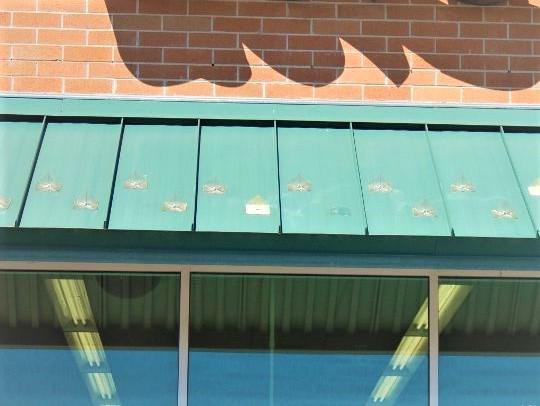There are different reasons why people want to have roof snow guards uninstalled.
1. The poor quality of the snow retention system. For example, plastic snow guards easily get ripped off the roof surface. The adhesive areas do not stick to the roofing, glue dissolves and the attachment gets broken. The remaining parts need to be dismantled. It should also be said that the manufacturers of such stoppers claim that these holders are intended only for light precipitation.

2. There could be gross mistakes made during the mounting process on metal roofing (standing seam or metal tiles). This results in bent, torn or ripped out snow holders. In this case one needs to remove not only the remaining pieces and screws but also fix the damage to the roof (screw holes, scratch mark, broken gutters and other related problems).
3. The estimation of the number or the position of snow guards was wrong. In this case the snow retention system is not able to protect against avalanches or withstand the snow and ice loads.
4. If the property owners replace the existing roof, all its elements, including snow guards, will be dismantled.
Whichever the reason is, the dis-mount and repair job on the roof should be done only by a professional and certified contractor.
Do I really need snow guards?
Even where winters are usually not too snowy with mild weather and warm temperatures, a snow retention system is recommended. After heavy snowstorms one can expect thaw. Melting periods are especially dangerous as the snow gets heavier and dangerously speeds off the roof surface (standing seam, metal tile, corrugated profile, shingle, slate, or other types of metal roofs).
Snow retention systems are recommended on metal roofing if:
- there is a path, landscaping area or a gazebo;
- a parking lot or a fence is arranged nearby which can be damaged by a snow layer;
- air conditioning units, satellite dishes, lamps or other items with an attachment to the wall of the house under the overhang;
- A drain made of plastic or thin metal is installed on the overhangs, which can be damaged or broken off by the snow mass;
- there is an entrance to the house under the roof overhang.
Such safety elements are needed even with a minimum slope. When using a roof covering with a smooth surface or a high pitch roof, it is recommended to install protection devices in several secure rows.
How do you get snow off a metal roof?
There are many methods to manually clean the snow from the roof during cold months. People often use special removal materials and tools like shovels, rakes, or ropes. However, such maintenance method is physically exhausting and risky.
Frequently houses are designed and built taking into account the climatic features of the area, and therefore a properly mounted rafter system will perfectly survive a thick snow layer. The indoor area will only benefit from the thermal effect of the several inches high snow load. Be aware though that sudden melt will result in massive snow fall-off. Therefore, it is a good idea to clean the roof in advance if there is positive temperature in the winter forecast . It is also necessary to remove the snow cover from the flat roof in order to avoid leaks and erosion of the soil near the house. The manual snow removal implies certain physical risks and costs. That is why we will not elaborate on this type of problem solution.
Let’s discuss snow guards, which act as a specially designed snow retention system that prevents snow from avalanching from the roof. With them you are free from any manual snow removal during freeze season.
Installation of snow guards for metal roofs is especially important. Ice crust of snow scratches the roof surface while sliding down the roof . Scratches can result in corrosion stains, the material deteriorates, which leads to the failure of the entire roof. The layer of snow held with the help of snow devices does not fall from the roof, but gradually melts on it, the water goes down through the drain. Also if the snow load is too heavy it slides down, but gets cut in safe portions by the snow guards. So the tubular snow guards perform two protective functions: they keep the snow and ice on the roof and once it gains critical mass and speeds down, the snow guards act as snow cutters and release the mass down in a staggered manner.

